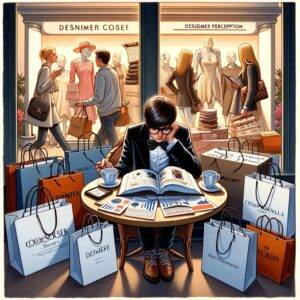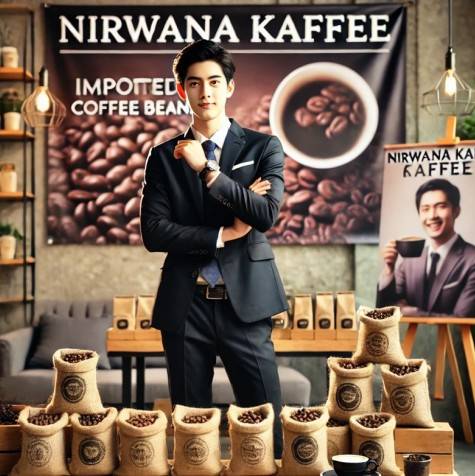
Project Week: Food Security and Supply Chain Operations
14. February 2024
Update from the Chancellor: We have all been dragged through museums!
27. March 2024My mother, a self-proclaimed fashion victim, has always been a bargain hunter as well. As a typical boy, I found shopping downtown with her utterly boring, and remember, my generation didn’t have smartphones to distract us. Whenever she dragged me along—literally—there was no escape from the fashion store marathon.
As an innocent child, I didn’t realize that my mother used my affirmation of her fashion choices to justify her purchases to my father, especially if they were a bit too funky for his taste. My father would then give me a look that silently asked, “What’s wrong with you? Are you colour blind?”
As I grew older and more aware of the cost associated with my mother’s fashion taste, my interest in shopping with her increased. Two questions lingered in my mind: How could a dress be priced at an incredible €1,000 at the start of the season and then, just three months later, be reduced to €300? Why did this discrepancy seem apparent only to me and not to my mother?
Indeed, I had not yet come to understand the concepts of vanity and conspicuous consumption. For me, the value of money was related to the number of toys I could buy with my pocket money, as their prices didn’t fluctuate seasonally.
Especially during my teenage years in Munich, I quickly recognized the importance of branded clothing in relation to social and group status. Munich being a city where both branding and non-branding are celebrated with equal zeal.
My passion for studying business, particularly marketing, partly stems from this peculiar aspect of the fashion industry. I was curious to uncover why consumers—my mother and later myself—engaged in such seemingly irrational consumption patterns.
My interest further grew when I discovered how the fashion industry increased its market share by institutionalizing outlets for last season’s and designer wear. They catered to customers who couldn’t afford the original or end-of-season prices, enticing them to purchase outdated or less expensive versions of branded items, believing they were getting a bargain when, in reality, they were not.
Interestingly, when considering the fashion industry from a purely rational standpoint—and borrowing from Wikipedia—the primary function of clothing is to provide insulation, serve as a hygienic barrier, and offer protection. Despite this, consumers spend considerable sums on fashion items, particularly handbags.
This leads me to the main point of this update: Bag Butchering. Those of you who are nerds or techies might know this as a Teardown or disassembly. It’s a process typically performed on hardware to evaluate component value and worthiness of the investment. Increasingly, it’s also used to determine if an item can be repaired independently or requires a professional, rather than relying solely on the manufacturer.
The master of Bag Butchering is Volkan Yilmaz, also known as Tanner Leatherstein. He disassembles luxury bags—and those more hyped than luxurious—to assess the quality of materials used, the craftsmanship, and to enlighten consumers about the fashion industry’s markup practices.
As the term suggests, Bag Butchering is indeed a form of dissection. However, as you’ll discover if you watch his highly addictive videos on YouTube and TikTok, it is a delicate, forensic, and educational autopsy of bags from leading and hyped fashion brands such as Gucci, LV, Prada, Longchamp, Delfina Güe, Chanel, Hermès, and many others.
Returning to my mother, her perspective on handbags has evolved. Previously a mix of vanity and bargain hunting, she now scrutinizes the true cost of handbags, basing her decisions on a critical evaluation of the fashion component in relation to material quality and craftsmanship—essentially, seeking better value for money.
As a marketer and her son, this shift brings me great joy. It resonates with my preferred definition of marketing:
Furthermore, in retrospect, the hours spent shopping with my mother have proven beneficial in the long run.
So don’t forget to always love your mother, and even when it may be sometimes challenging, be thankful and grateful for the time you can spend with her.
Best regards from Munich,
Sascha Liebhardt











